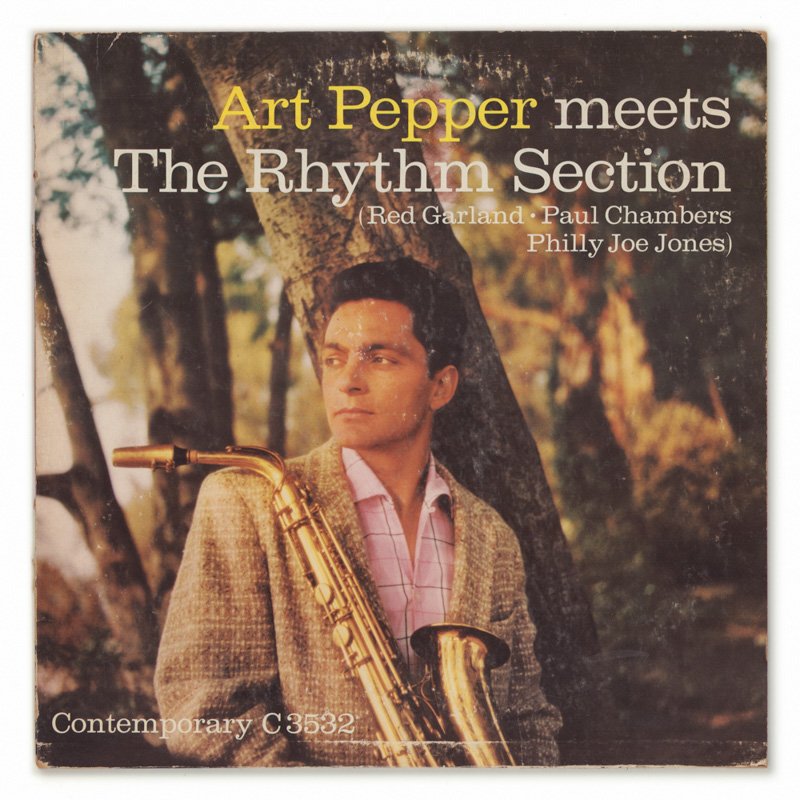The story lives at 8481 Melrose.
Contemporary's musical legacy is not really in question.
But equal to any player were the engineers. Some of the top audio minds of the generation sat behind Contemporary’s console painstakingly cutting the label's story into thousands of grooves. Grooves which lay the foundation for our research here.












Contemporary's success was built on simplicity.
Established 1951 as a classical off-shoot of Lester Koenig's Good Time Jazz label, Contemporary was built to be nimble, lean, and quick-moving. It moved quickly into modern jazz and shined bright in the late 1950s and early 1960s. It then persevered through the temperamental late 60s and 1970s which left jazz behind. And ever it maintained a stubborn independence in the face of larger fish and a shrinking pond of rampant consolidation… that is, until 1984 when consolidation finally captured Contemporary.
Four distinct eras divide the ownership history of the label:
1951 (label founded by Koenig as a flipside to Good Time Jazz) to 1977 (his death).
1977 (John Koenig assumes control of the label) to 1984 (the label is acquired by Fantasy Records).
1984 (Contemporary now under the Fantasy and OJC umbrella) to 2004 (Fantasy is swallowed whole by Concord Records).
2004 (Concord + Fantasy create Concord Music Group, later Concord) to... now.
This site targets the first two eras with sometimes necessary context peppered in from the latter two.
The means of excavation
is an examination of the physical deliverable: vinyl records.
I don’t have any kind of inside information and (as of the site’s launch in late 2024) I haven’t personally connected with any of the players in the Contemporary story. I wanted to see how much I could figure out on my own before going that route. This was a test for myself, which I think I’ve passed, so I’m including this paragraph as a flex.
The focus here is broad. I don’t want to just explore original pressings, which would be easy. Original pressings in mono and/or stereo were followed by generations of reissues involving new engineers, new plants, jacket redesigns, label recolors, and more changes... but up to the year 1984 these reissues were cut under the creative supervision of the Koenigs. Changes brought about by reissues were not a case of original artistic intent being discarded, but rather of carefully reframing that intent using evolving technology and designwork to fit a changing marketplace.
Put more simply: Contemporary's vinyl output from the 1955 to 1984 is worthy of attention in total, and the story behind it should be better understood. So the goal is to accurately catalog Contemporary's US originals AND reissues from 1955 to 1984. To do that, we need detailed notes on runouts, labels, pressings, and design, with deep information balanced against corroborating testimony and illuminating visuals.
Accuracy over brevity.
I often find myself torn between jazz and data. Jazz being a good day of writing, organized but freeform, ideas flowing like music. I make jokes and drop in Lord of the Rings GIFs. Data are the other days when I have to dig through a muck of historical information and somehow churn it into something you might understand. The muck days are more plentiful and less fun, but much more critical. Delivering accuracy means inviting you into that muck with me.
As a result, this will be both lengthier and more dense than you might like. Sorry! I won't be abridging vital information just to keep things bite-size. Where things get convoluted it’s necessary to the data. This site is written for people who don't mind — and might even enjoy — processing complex information in pursuit of facts.
That's not to say you need to be an expert coming in. You — random person stepping into this dorky internet café — should probably know what a vinyl record is. Maybe you should be familiar with things like trumpets and saxophones. Beyond that, I’ll try to explain.
Behind the physical evidence that forms the core of this guide is the better part of two years given to assembling/revising/destroying/re-assembling its pages and thousands of hours spent studying the information to feed those painful creative things. Evidentiary holes have been filled with the help of existing sources, era periodicals, and, most importantly, playing with records! This is supposed to be fun! Audio is about music, not the other way around.
The result all that nonsense will be, I think, the definitive Contemporary Records reference for jazz fans, vinyl nerds, audiophiles. People like me and maybe you.
I expect that some of what’s here will be corrected, refined, proven or disproven as others interface with it. I will likely acquire bits of new history as this journey unfolds. I have, over the past half-decade, taught myself a lot— but there is always more to learn.
This site is… weird
I know what you’re thinking. This is way too complicated. I’ll look this up somewhere else. Are you insane?
Well, I want to actually do this right. I care about this. This is about actual people and history and audio engineering and super fascinating shit. It’s not insane to take information seriously as data and process it like an intelligent person.
Is it, however, insane to collect a dozen copies of a single album? Yes! I contain multitudes.
This will be a living reference
with updates made as new details or stories or lacquer numbers spring forth from wherever those secrets live. Many of them may live in your brain or your record collection or your storage unit or somewhere else. So if you have stories to tell, intel to share, or have in-hand a Contemporary Records record that just confuses the hell out of you, please contact me. I’d love to cite you as a source as we build out this resource together.